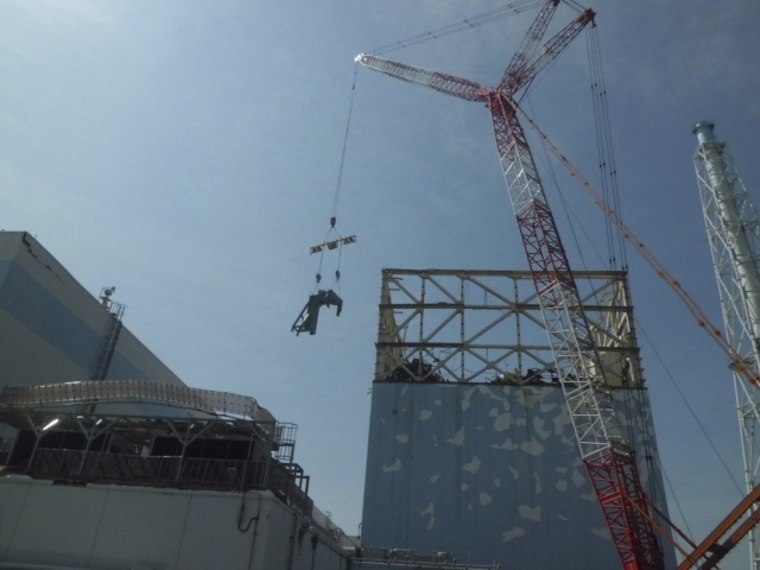The operator of Japan's damaged Fukushima Dai-ichi nuclear power plant said Friday that it is building a huge tent to cover one of the worst-hit reactors.
Japan's government, meanwhile, said it will set up a new nuclear safety watchdog under the auspices of the Environment Ministry, part of an effort to tighten safety standards after the earthquake and tsunami triggered the world's worst nuclear crisis in 25 years.
Fukushima officials hope the cover will keep radioactive materials that have already leaked from spreading, prevent rainwater seepage and offer a barrier from possible leaks or blasts in the future.
The tent is being erected to provide a temporary replacement for the No. 1 reactor's outer housing shell, which was destroyed in an explosion caused by high pressure the day after Japan's deadly earthquake and tsunami on March 11.
Construction of the tent and its foundation began this week, Koji Watanabe, a spokesman for the power utility, said Friday.
The work couldn't begin until now because the location was too dangerous for workers to operate in.
The tent is made up of airtight polyester. It will stand 177 feet tall and stretch 154 feet in length. It is held up by a metal frame.
Tokyo Electric Power Co. officials have struggled to come up with ways to mitigate the dangers from the plant since the disaster struck five months ago, sending reactors into meltdowns, releasing radiative particles into the environment and causing the world's world nuclear crisis since Chernobyl in 1986.
Work at the plant has been hindered by the continuing threat of radiation to workers.
Earlier this month, TEPCO said an area where potentially lethal levels of radiation were detected near Unit 1 has been sealed.
It said radiation exceeded 10 sieverts — 40 times the highest level allowed for an emergency workers to be exposed to — at two locations near a duct connected to a ventilation stack. The area required no immediate work and was closed off.
If the tent over reactor No. 1 proves successful, similar coverings will be constructed over other reactors on the plant. The areas around the other reactors are also highly risky to work in.
The tent is expected to be completed by the end of September, Watanabe said.
The new regulatory agency will, as expected, combine the Nuclear and Industrial Safety Agency (NISA) with another government advisory body. Experts have warned that the organization change alone may not be enough to restore tattered public faith in Japanese utilities or ensure effective oversight.
The Environment Ministry, while less powerful than the trade ministry which previously both regulated and promoted nuclear power, is seen as relatively untainted by the collusive ties with industry that plagued the existing safety agency.
"We've decided to separate the nuclear safety regulation division of the NISA from the trade ministry, and unify atomic safety-related affairs under the Environment Ministry," Prime Minister Naoto Kan told his ministers.
The new regulator will bring together 500-600 officials from existing agencies and will consider imposing tougher regulations on nuclear power plants, nuclear crisis minister Goshi Hosono has said.
"It is a theme of national proportions, and a conclusion needed to be reached swiftly," Hosano told reporters on Friday.
The radiation crisis at the Fukushima Daiichi nuclear plant, 150 miles north of Tokyo, spurred an overhaul of Japan's energy policy and Kan has called for the nation to cut its dependence on nuclear energy.
The March accident also prompted other countries to review their safety standards. The U.S. nuclear watchdog is considering whether to take a tougher approach to safety that could force plants to plan for disasters far more violent than those they were originally designed to withstand.
Kan's decision to reshuffle the nuclear regulatory bodies came as more than 2,000 farmers from Fukushima marched through downtown Tokyo, demanding an early end to the unfolding disaster and full and quick compensation payment.
Radiation exceeding safety standards has been found in farm produce such as beef and vegetables since the accident, stoking food safety fears and prompting the government to ban shipments from Fukushima and some neighboring prefectures.
"Our anger is reaching boiling point," said Takahiro Abe, a spokesman for an agricultural cooperative from Fukushima.
